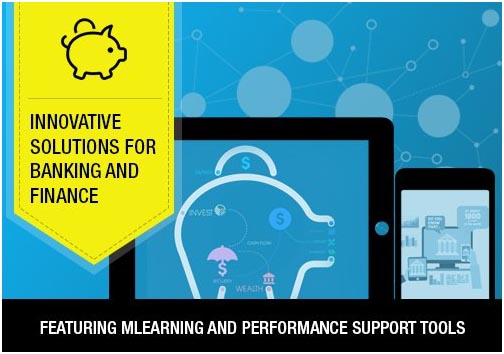
Business continues to shift at an ever-increasing velocity. The skills required to be successful today are different than they were yesterday and will continue to change in the future – creating a skills gap. Take a look at how a digital learning strategy holds the key to bridge this gap.
What Is the Skills Gap?
Many skills that were relevant in business yesterday are now irrelevant, and many that are relevant today will be irrelevant tomorrow. This is the skills gap, and it exists in most businesses. Take, for example, the popular authoring tool Adobe Flash. For a long time, visual designers who knew Flash were widely sought after. But now, Flash has been replaced by other authoring tools – creating a skill gap.
Why Is the Skills Gap a Risk for Business?
Even well-established businesses that thrive for a time typically fail because they’re unwilling or unable (or both) to bridge their workforce’s skills gap. Many established companies failed because they neglected to recognize the skills gap that existed in their workforce, quickly falling behind innovations developed by upstart competitors. In contrast, the upstart firms are quicker, faster, and more innovative. They either develop or recruit employees with more relevant skills.
Often, organizations are slow to recognize the skills gaps – and instead double down on practices that brought initial success. Sometimes, it is due to a conservative approach by leadership, and sometimes, it’s the fear that new skills and the resulting innovations will undercut the existing business. Either way, failing to bridge the skills gap is one of the leading causes of business failure.
Why Do Digital Learning Programs Hold the Key to Close the Skills Gap?
The creativity and ability to learn will soon be the most sought-after skills in potential employees. Existing employees should continue to foster a sense of curiosity and passion for learning. Upskilling and reskilling employees helps organizations build a competitive talent advantage. Often, the required time and effort for ongoing learning is shuffled to the bottom of a long list of priorities.
Opportunities for professional development are a critical factor in employee satisfaction and retention. Potential employee candidates rate it as one of the most important considerations when identifying desirable job opportunities.
Digital learning programs make it possible to train distributed talent effectively.
COVID restricted a lot of travel. Businesses have found that they can not only function but thrive with much less travel. Virtual meeting and training technology have been proven to be effective.
- Additionally, self-paced learning content that is accessible anywhere on any device supports higher employee performance.
- Adopting digital learning programs helps to quickly create and deploy scalable training solutions. While face-to-face training will still play a part in training strategies, time, resources, and facilities restrict how scalable that training is.
- Digital learning programs allow access to learning content for a wide variety of audience sizes, regardless of location.
- They also greatly decrease the time required to deploy solutions, allowing businesses to react to performance, economic, and social situations more efficiently.
- Digital learning programs help to measure and maximize the business impact of training programs. Content is contained and accessible through platforms (such as LMSs) that track usage, user knowledge, and can be used for application and business impact metrics.
How Can You Close the Skills Gap with Digital Learning?
Creating a culture of learning is the top priority for any organization seeking to close the skills gap. Digital learning – learning that’s accessible online through any device at any time – is central to a healthy culture of learning.
Organizations can use digital learning to close the skills gap by:
- Aligning the learning programs to the business goals. Focusing on supporting enterprise goals enables more effective training program assessments.
- Offering digital learning that is aligned to the business goals. This targets and highlights learning opportunities. Focus on two areas – poor performance metrics and capitalizing on performance strengths.
- Creating an environment that facilitates continuous learning.
What Digital Learning Strategies Can Close the Skills Gap?
The following digital learning strategies will help close the skills gap:
- Enable anytime and anywhere learning by utilizing mobile, microlearning, and gamification modalities.
- Virtually collaborative relationships that include coaching and mentoring by experienced subject matter experts and leaders.
- Skills building by practice and feedback loops in safe-to-fail zones. These zones should be:
- Immersive, employing learning strategies for training a remote workforce.
- Scenario-based.
- Focused on problem-solving.
- Inclusive of opportunities for experimentation, implementing real-time feedback loops.
- Cloud-based learning. This is effective because it is device- and location-agnostic. Mobile learning can be used on the go, on the job, and in the moment it’s needed.
- On-the-job support, including:
- Performance support systems.
- Learning in the flow of work (LIFOW).
- Informal learning networks.
- Analytics and measurements that not only keep track of learner progress but give real-time nudges and provide feedback.
- Training that focuses on iterating solutions, including:
- Design thinking – It aids employees and teams to identify core issues and brainstorm and experiment with potential solutions in safe, low-risk environments.
- Nudges for learning as needed, using things like software tutorials and smart walkthroughs.
- Performance support and just-in-time learning for learning in the flow of work.
What Must Organizations Do to Support a Learning Culture Through Digital Learning?
Among the requirements to close the skills gap, organizations seeking to develop an effective learning culture through digital learning should foster:
- Executive support and modeling of desired learning behaviors. High-level executives should share on the digital learning platform what they’re learning and how they’re applying what they’ve learned.
- A safe environment for learning, experimentation, and failure. People don’t learn when they succeed. Instead, people learn when they fail.
- A culture of curiosity and safe experimentation where ideas and product iterations are rewarded and failure is celebrated.
- Opportunities, both in time and funding, for learning.
- Concrete rewards for those who make the effort to initiate, apply, and share learning.
- On-the-job support in the form of performance support systems, job aids, and coaching and mentoring.
- Self-directed informal learning
What Are the Issues that Can Inhibit the Skills Gap Solutions?
Be careful of the following issues that can inhibit the skills gap solutions:
- Digital learning that isn’t connected to workplace performance.
- Distractions like email and messenger applications. Employees should be encouraged to silence distractions for large chunks of time so they can commit to focusing on important tasks, like learning.
- Some platforms aren’t conducive to learning because they are overly complex. The cognitive energy required by the interface inhibits effective digital learning. Too often, learners are overwhelmed by a platform’s complexity.
- Organizational resistance to change.
Parting Thoughts
Business is moving faster and faster and change is the only constant. This will keep creating a skills gap with existing employees. Building and employing an effective digital learning strategy can certainly help organizations bridge this gap.
Want to learn the key focus areas for acquiring training and development strategies and tactics to plan for the year ahead?



